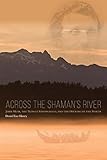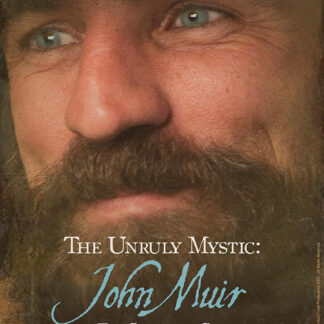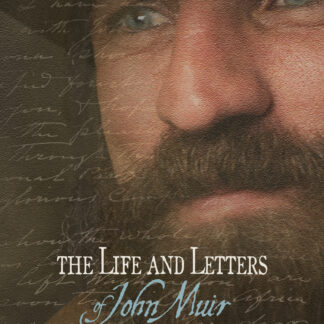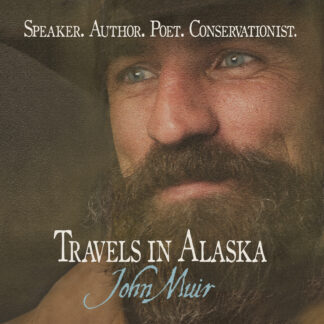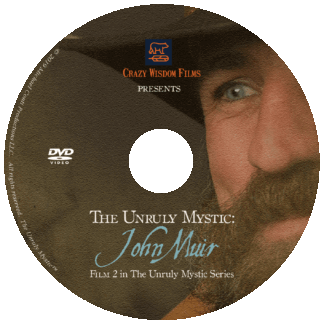John Muir, a key figure in the environmental movement, has recently come under scrutiny for his documented racist attitudes towards Native Americans and Black Americans, leading to some diminished stature within the Sierra Club. Despite his legacy as a pioneer of the conservation movement, some have reckoned with the problematic aspects of his views towards those who lived on the land before him. While there is evidence of racial bias and erasure of Native Americans in his writings, some argue that Muir had a change of heart during his 1879 trip to Alaska. It is important to acknowledge both Muir’s contributions to conservation and the problematic aspects of his legacy.

At 41 years old, he had recently become engaged to Louisa Wanda (Louie) Strentzel, and he wouldn’t see her again for 6 months while he explored Alaska. Seeing Alaska glaciers for the first time would later support his argument that the Yosemite Valley had also been formed by glaciers. He would also find his own perspectives deeply challenged. His meeting of the Chilkat/Chilkoot Tlingit Tribes dramatically changed his prior opinion that Native Americans “seemed to have no right place in the landscape.”
Muir wrote:
I have not seen a single specimen that looks in the least like the best of the Sioux, or indeed of
Travels in Alaska, Alaska Indians Chapter 13
any of the tribes to the east of the Rocky Mountains. They also differ from other North American Indians in being willing to work, when free from the contamination of bad whites.
It is worth noting that even though Muir’s later views represented a shift from his earlier racial biases, they still reflect the patronizing and racist attitudes prevalent during his time. It is also important to recognize that the exploration, claiming, and establishment of wilderness areas in North America by early pioneers was rooted in racist practices. While Muir’s evolution should be acknowledged, it does not erase his earlier comments and actions that reflect his legacy and their impact on marginalized communities.
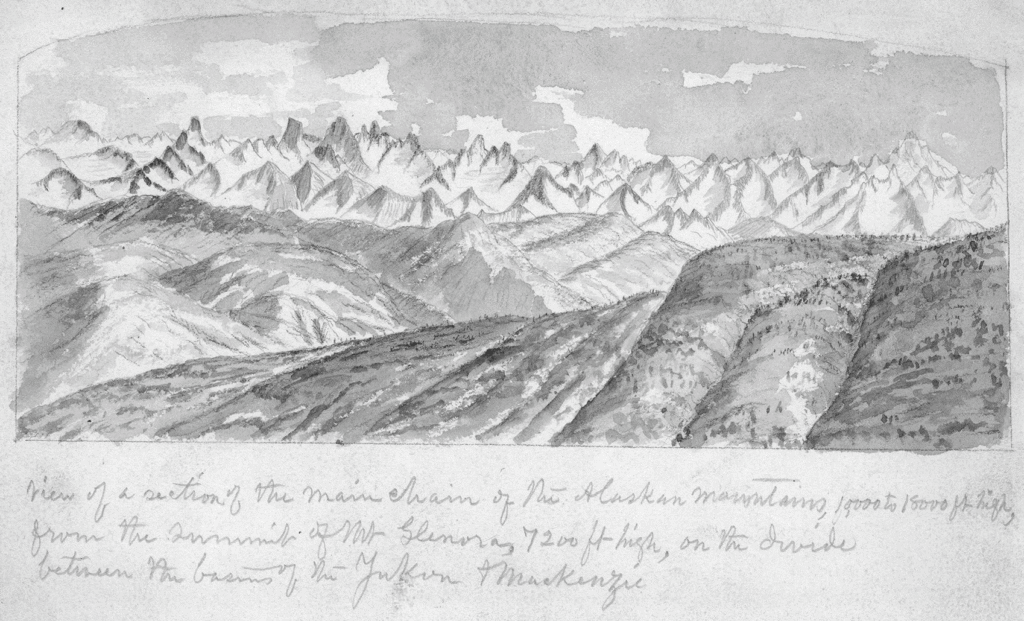
A draft of his book was open on his bed stand when he died on Christmas Day, 1914, a final testament to the man who not only loved the wilderness with all his being but, perhaps, was able to look past his racist beliefs and uncover common humanity within a culture other than his own. My hope is that the future of John Muir’s legacy allows for both the upholding of his work in environmental conservationism as well as the reality of his racist views. The wilderness is and should be for everyone
Awaken in Alaska
While coming to terms with John Muir’s racism, I wanted to know more about Muir’s encounter with Native American tribes in Alaska. I discovered that author Daniel Lee Henry had also explored Muir’s Alaskan awakening in his book, Across the Shaman’s River: John Muir, the Tlingit Stronghold, and the Opening of the North. Henry has a direct connection to the Chilkat/Chilkoot Tlingit descendants, having lived and taught school in Haines, Alaska for many years. His book takes the reader into this community in Alaska during Muir’s Northern travels.
I asked Henry to write a new foreword for the 2022 annotated printing of Travels in Alaska (Illustrated and Annotated) (which also includes an eBook and an audiobook version). It is important to address why this book continues to be significant and relevant in the context of our modern times.
In my new introduction to Travels in Alaska, I write about my travels along the Inside Passage of British Columbia, a magical place that some have called “Yosemite by the Sea.” When making my film, The Unruly Mystic: John Muir, my own perspective of the First Nations people in Canada expanded when I met “Cecil Paul” from Xenaksiala, an elder of the Killer Whale Clan. This unexpected introduction happened when we went deep into the heart of the Great Bear Rainforest in search of the elusive White Spirit Bear along the shores of Lake Kitlop. More details can be found in the film.
Knocking down our own Monuments
A quick overview of current events helps to explain why Travels in Alaska is still so timely for our conversation today.
In 2020, the Sierra Club’s national executive director, Michael Brune, brought attention to the racism of “the most iconic figure in Sierra Club history” in a post to the organization’s website. Brune notes that Muir’s views do appear to have “evolve(d) later in his life,” but notes that Muir’s “derogatory comments about Black people and Indigenous peoples…continue to hurt and alienate Indigenous people and people of color who come into contact with the Sierra Club.”
As a young man, Muir had described the Native Americans he encountered on his famous walk in 1867 from the Midwest to the Gulf of Mexico as “dirty,” and referred to African Americans using an offensive racial slur, reported Darryl Fears and Steven Mufson for the Washington Post.
Several months after Brune’s original announcement, the Sierra Club put together a special task force, mostly of people of color, to study the history of the Club further and Michael Brune’s original allegation. They concluded that while John Muir used derogatory language about Indigenous people which “created harm” that “Muir later recognized and appreciated the achievements of Indigenous people and spoke about the equality of all people and the importance of making public lands accessible for all.”
Nonetheless, the issue has continued to be controversial within the Club. The Club board of directors officially excoriating former Club President Aaron Mair (a Black man) for defending Muir and punishing him and two others for publishing the Earth Island Journal article, Who Was John Muir, Really? There is a “nuance” that must be applied to the issue and I hope that the club takes a balanced perspective.
In a recent interview, Mair made a statement one might find fascinating – – “intellectual dishonesty is a form of white supremacy.” The truth of the matter is John Muir was racist, the exploration of the American wilderness was racist, and generations of Native Americans have been traumatized by these facts. That can be acknowledged while also appreciating the conservation work done by pioneers like John Muir and the understanding that views can change.
I love John Muir. So much so that I made a 75-minute documentary film in 2018 that was screened internationally and highlighted how Muir’s prose enabled in me a deeper appreciation of nature and spirit, a feeling shared by many others. It caught me by surprise when I found out the Sierra Club had called out the racism of its own beloved founder, John Muir.
I wasn’t sure what to do or say, except learn more. I had no idea Muir was considered a racist or had made racist statements. Staunch Muir defenders quickly condemned Brune’s statement, based upon additional historical facts and later statements Muir made. I spent some time between then and now, asking the difficult questions of how, when, and why, and doing research into what really happened afterward.
There is still a lot to learn as I have discovered when I first wrote this post. For example, how about those that say that John Muir was never racist? If so, there would be no reference point like Travels in Alaska that some are espousing including me. A non-evolving Muir was already self-aware and wrote what he saw, using common terms in the vocabulary of literate Americans at that time. That does not of course excuse his racist views or the harm they caused.
Professor Raymond Barnett calls out those that see an evolving Muir and says:
“They are displaying considerable ignorance of their founder member’s early life, his nuanced writings, and above all of the attitudes prevalent when he lived. They have been seduced by the modern fad for rewriting history, preferably combined with some statue-toppling and feet of clay.”
There is some truth in that too. It is also a matter of interpretation as we only have historical records as evidence, and no living witness to question.
All of which brings up that I must also acknowledge my own racism that has been unintentional, and make amends. I admit I have too often failed to speak up and confront institutions that hurt Black and Indigenous people. Any racism is morally repugnant, and any decent person today knows that. There lies the power of redemption for all of us; to recognize the power of our words and thoughts; to evolve towards kinder, more compassionate, and broader thinking; to realize our mistakes and make amends towards others.
For those who wish to learn about this nuanced John Muir, please consider reading Travels in Alaska. Muir’s written experiences there represent a man who loved the wilderness and found within it a way to uncover shared humanity. While I am of the opinion that John Muir evolved beyond some of his racist perspectives during his time in Alaska, I challenge you to read and uncover your own interpretation of his story.
Here is a portion of the Zoom interview that I conducted with Daniel Lee Henry on April 1, 2022. The question I posed was: What would Chilkat/Chilkoot Tlingit Tribes say to the Sierra Club today?
